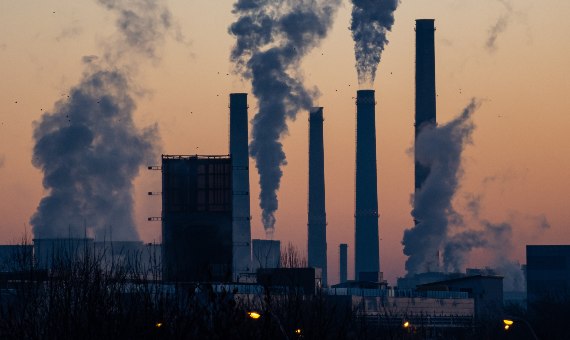The coronavirus health crisis has marked a turning point in history, transforming the dynamics of relationships, production and growth in our societies. The fight against the virus – apart from posing an enormous challenge in terms of healthcare management and scientific research, represents an opportunity (or a warning) to reconsider our relationship with the environment. And energy – a key question to stop global warming and that this year, partially due to COVID-19 – is gaining momentum in the final decade to meet the goals of the United Nations 2030 Agenda for Sustainable Development.
A MANDATORY TRANSITION FOR THE POST-COVID RECOVERY
The International Renewable Energy Agency (IRENA) published a report in June on the post-COVID recovery agenda in terms of energy in which it maintains that the health crisis has given us very valuable information on the consequences of the climate crisis. “The impacts of COVID-19 and climate change both know no borders; both put the poor and vulnerable at greater risk than the wealthy; and both demand government action on an unprecedented scale,” indicates the introduction to the report.
Similarly, an editorial published in May in the scientific journal ACS Energy Letters, in which Song Jing, senior editor of the journal explained a fundamental parallel between both crises: “…ignoring the growing scientific evidence and pretending that one could wish the problems away does not help us and cannot save us from the consequences. The facts will catch up with all of us no matter what one believes in.” For Jing, a professor in the Chemistry Department at Wisconsin University, this lesson is fundamental because in both crises there is a key factor: time. “A few weeks in the case of COVID-19, and perhaps a few decades in the case of climate change.”

Meanwhile, United Nations considers the energy sector a key part of fully understanding the impact of the transition and also guaranteeing that it is fair and timely. In the context of the pandemic, the UN admits that the health crisis “seems to have heightened investor interest in sustainable assets.” Furthermore, the transition toward renewable energy will serve as an incentive for job recovery after the health crisis, as, according to IRENA estimates, ”every million dollars invested in renewable energy would create at least 25 jobs, while every million invested in energy efficiency would create around 10 jobs.” According to these forecasts, an accelerated energy transition could add 5.5 million more jobs by 2023. In addition to the benefits for the environment and job market, investments in the energy system after the COVID-19 pandemic can pave the way for more equitable, inclusive and resilient economies, according to the International Agency for Renewable Energy.
The IEA estimates that global CO2 emissions will decline eight percent in 2020, reaching the lowest level since 2010.
The International Energy Agency’s (IEA) annual monitoring report, confirms that progress in renewable energy was promising, although uneven, prior to the pandemic (2019). In terms of the CO2 demand during lockdowns in several countries, the IEA reiterates a fundamental message: the short-term impact does not guarantee a sustained decrease. However, it is true that global demand for energy is expected to contract six percent in 2020, the greatest drop in over 70 years.
RENEWABLE ENERGY: A HIATUS TO GAIN MOMENTUM
Despite the encouraging forecasts regarding the growth of the sector after the pandemic, the exceptional circumstances in many countries has had a short-term negative effect on the renewable energy sector- an industry that had its production chain interrupted and a slowdown in installation activities, according to IEA analysis. Furthermore, demand for fossil fuels and biofuels has fallen from road transport, therefore lowering biofuel prices and compromising the profitability of production.
In IEA estimates for 2020, “renewable energy demand increases by about one percent from 2019 levels, in contrast to all other energy sources.”
Despite the circumstances of the lockdown and the delays that have taken place, the IEA reports that renewable energy generation rose nearly five percent. This means that renewable energy comprises nearly 30 percent of the global supply of electricity, reducing the gap with coal in half (10 percentage points in 2019). Although the IEA considers that growth in renewable energy is slower than last year, in reality the deceleration trend from 2016 continues. In 2020, photovoltaic solar energy is expected to grow faster than all other forms of renewable energy.
In addition to taking the lead in production, renewable energy could also become one of the most profitable energy sources in 2020. According to an analysis by Martin Lee Wilson, an expert in renewable energy, in 2019, the electricity generated from photovoltaic, wind and solar plants was already much more affordable than energy from many plants powered by fossil fuels.
NEW MILESTONES IN THE COMMITMENT TO THE 2030 AGENDA
Meanwhile, the political aspect of the environmental management is also reacting to the pandemic and environmental crisis by toughening emission reduction targets. The European Commission is proposing to reduce emissions 55 percent by 2030. It is the first time that the EU has updated its climate objective since the 2015 Paris Agreement. Commission President Ursula von der Leyen has promised to propel a sustainable recovery in the post-COVID crisis, starting with increasing the EU emission reduction target by 15 percent (from 40 to 55 percent).

Meanwhile, in early fall 2020, Chinese President Xi Jinping announced at the UN his intention to be carbon neutral in a period of 40 years. The Chinese promise to stop increasing their coal production in the current decade also represents an incentive to inspire similar actions in other countries. This 2060 commitment from China is the first long-term commitment the country has made regarding carbon emission targets, which in this case is especially relevant as the country represented around 28.8 percent of global carbon emissions from energy in 2019.
Comments on this publication